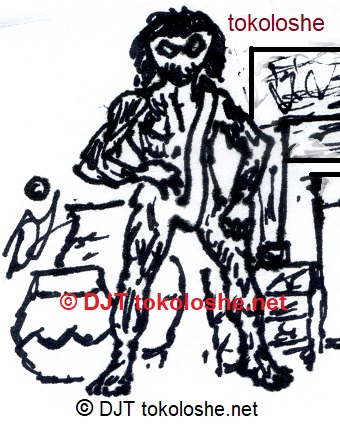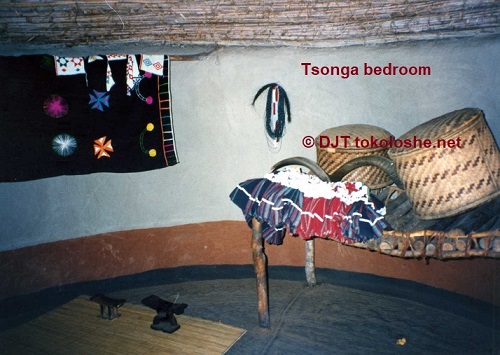The Tokoloshe
The Tokoloshe is NOT Why Beds are Raised on Bricks
|
I discussed some aspects of the tokoloshe legend in the article The Tokoloshe. Certainly, at least in the recent past, servants in South Africa often raised their beds on bricks. Some people say that this is, or was, done for protection against the tokoloshe. Wikipedia is often the first port of call for researchers but its explanation for the tokoloshe, and for why black South Africans originally raised their beds on bricks, is ingenious but erroneous. Although the author might not be a white South African, the article actually perpetuates a WHITE South African myth about the tokoloshe.
According to the Wikipedia article at the time that I am writing, the tokoloshe entered folklore as an explanation for why some people died in their sleep during cold Highveld winters. (This actually contradicts the first sentence of the article, which correctly states that the tokoloshe is a water sprite. This anomaly is probably the result of someone editing the original article.) The Wikipedia article goes on to state that the deaths were caused by gas poisoning because indoor fires reduced the amount of oxygen in the dwellings, causing heavier, and toxic, carbon dioxide to build up near the ground. The carbon dioxide, according to the article, was personified by the tokoloshe and it was found that people who slept in raised beds did not die inexplicably. The Wikipedia explanation, both for the beginning of the tokoloshe legend and for why black South Africans started raising their beds, is intelligent and worthy of consideration. However, it is certainly incorrect, for a variety of reasons:
The notion that servants raised their beds on bricks so that they would be safe from tokoloshes was originally the speculation of their white South African employers, not the belief of the servants themselves. Of course, ideas diffuse between communities and cultures. If someone who believes in the tokoloshe hears, even from his or her white employer, that raising beds on bricks keeps people safe from that goblin, that someone could have an additional incentive for raising his or her bed. Muti sellers and sangomas also have a financial motive for encouraging any superstition, and that is another way by which the myth could spread from white people to black people. Also bear in mind that not all muti dealers are black, e.g. the Indian-owned muti shops of Johannesburg's Diagonal Street. (See the article The Real Diagon Alley on ghostsafari.com.) However, if young black South Africans really have started to believe that their grandmothers raised their beds on bricks to keep themselves safe from the tokoloshe, I particularly blame the media, especially a series of scurrilous cartoons in the Madam and Eve daily comic strip (of which, I admit, I am a fan). Young South Africans, rest assured, your grandmothers may not have had European style educations but they were NOT STUPID! Even if they believed in the tokoloshe, they knew that raising their beds on bricks would not protect them. They raised their beds on bricks as an INGENIOUS OPTIMIZATION OF THE USE OF SPACE in cramped sleeping quarters. More About the Tokoloshe
You can read more about the tokoloshe in my articles
The Tokoloshe and Are Tokoloshes Melon Heads?
|
COPYRIGHT DJT tokoloshe.net © April 2019 : No material on this site may be copied by any means, without the author's permission.


